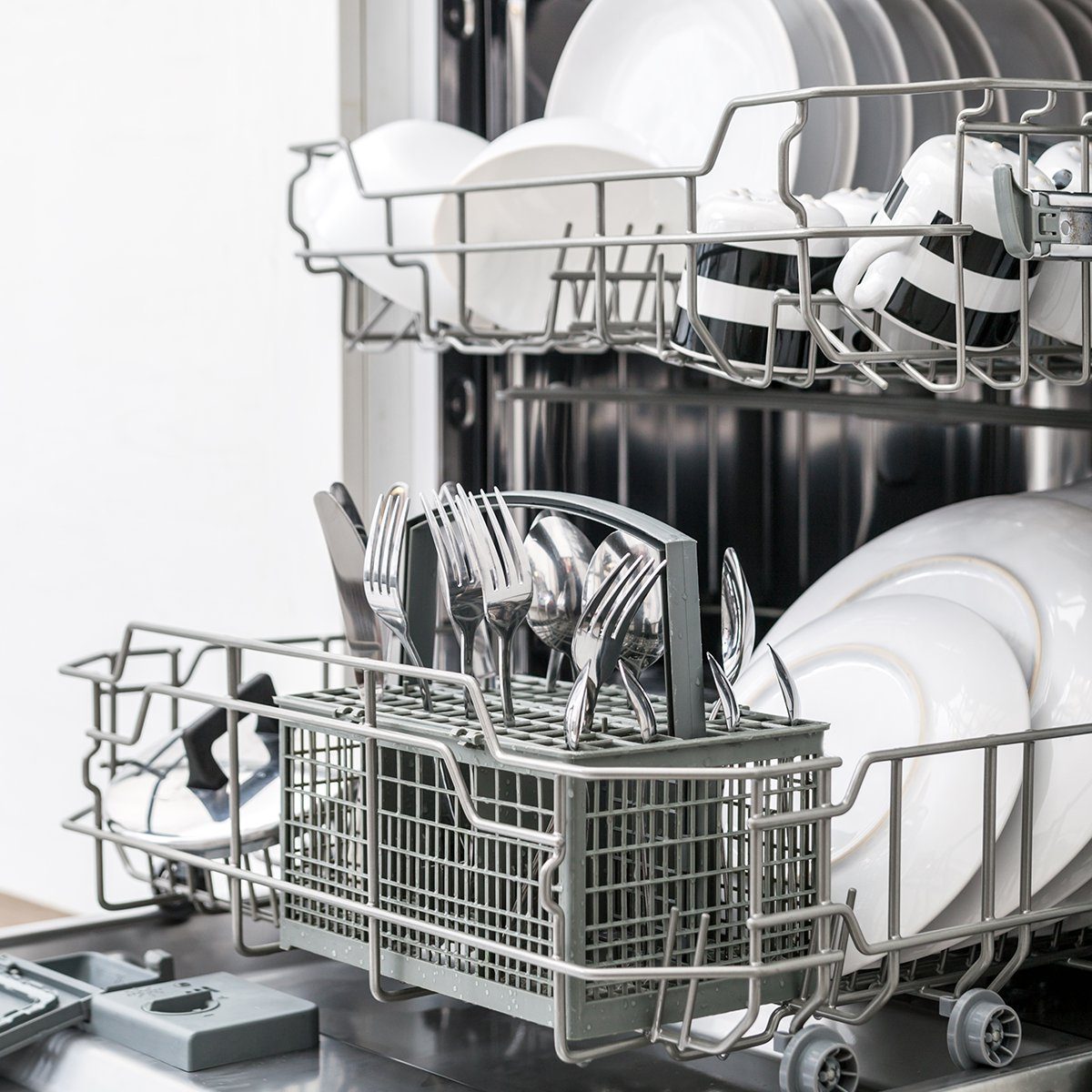
Relying on the dishwasher
Most stainless steel pots and pans are dishwasher safe, but that doesn’t mean you should clean them that way! Long cycles and high-temperature water can damage the surface of pots and pans and loosen-up the handles.
Learn the ways you’re shortening the life of your dishwasher.
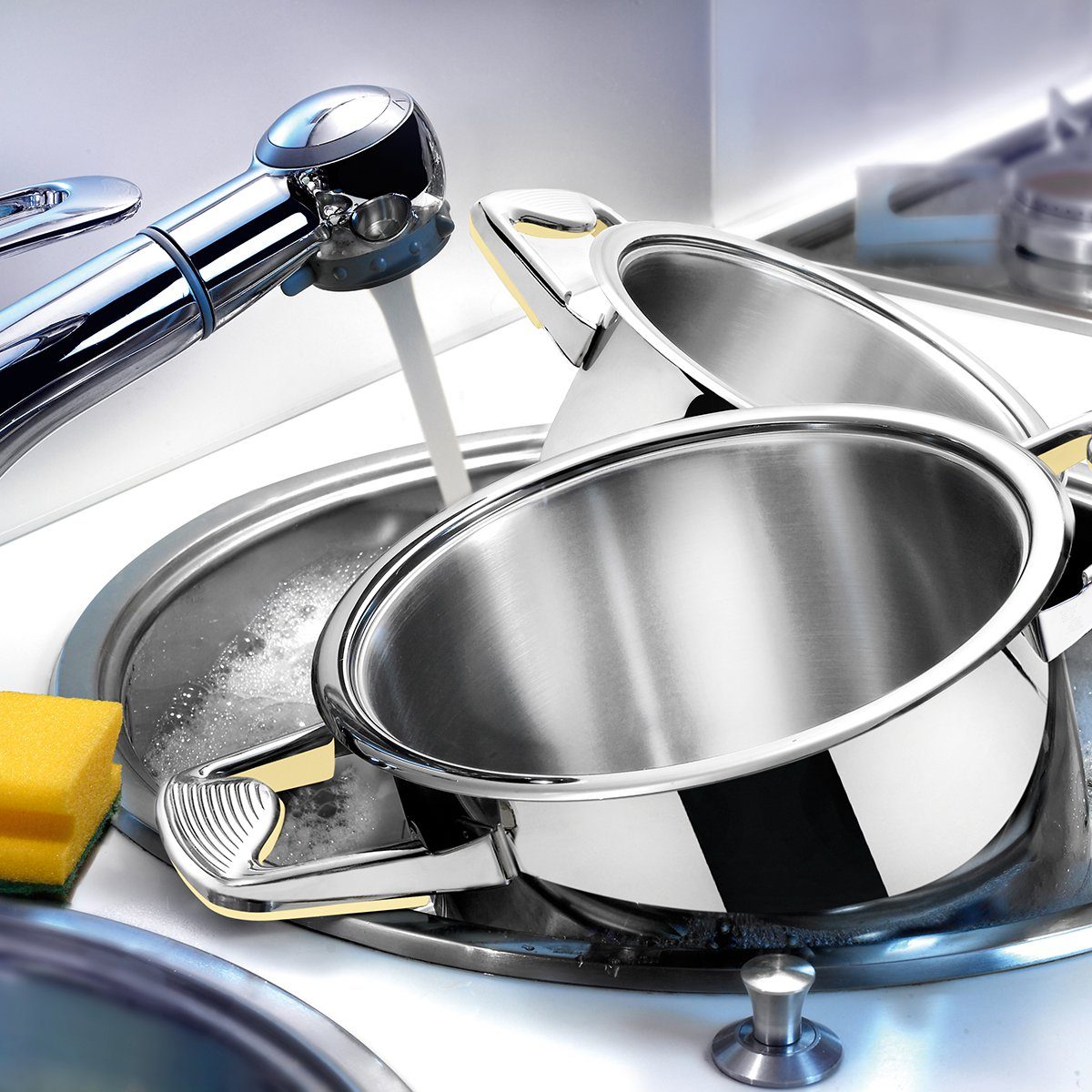
Cleaning them before they’ve cooled
Exposing hot pots and pans to cold water is a great way to warp or crack the pan. The shock of the temperature difference also causes steam, which could burn your hands. Practice a little patience and let the pans cool down before attempting to clean them. Did you know that cast-iron cookware has special rules, too?
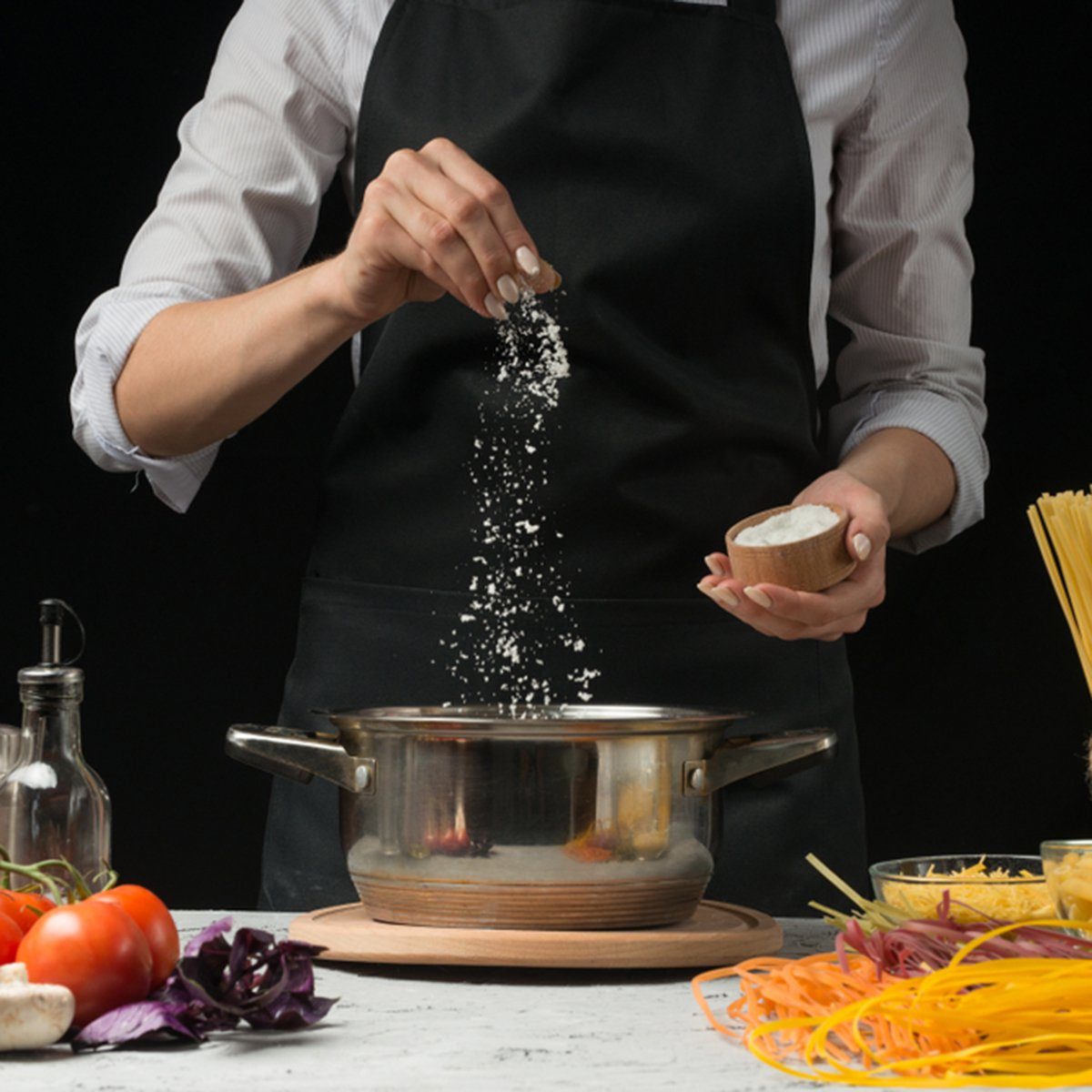
Adding salt to cold water
Many of our favourite pasta recipes call for seasoning the pasta water—it should be as salty as the sea—but recipes often fail to tell you when to add that salt. Always add your salt after the water has come to a boil to avoid pitting the surface of the pan, an irreversible condition.
Here are 10 things you shouldn’t be storing on your kitchen countertop.
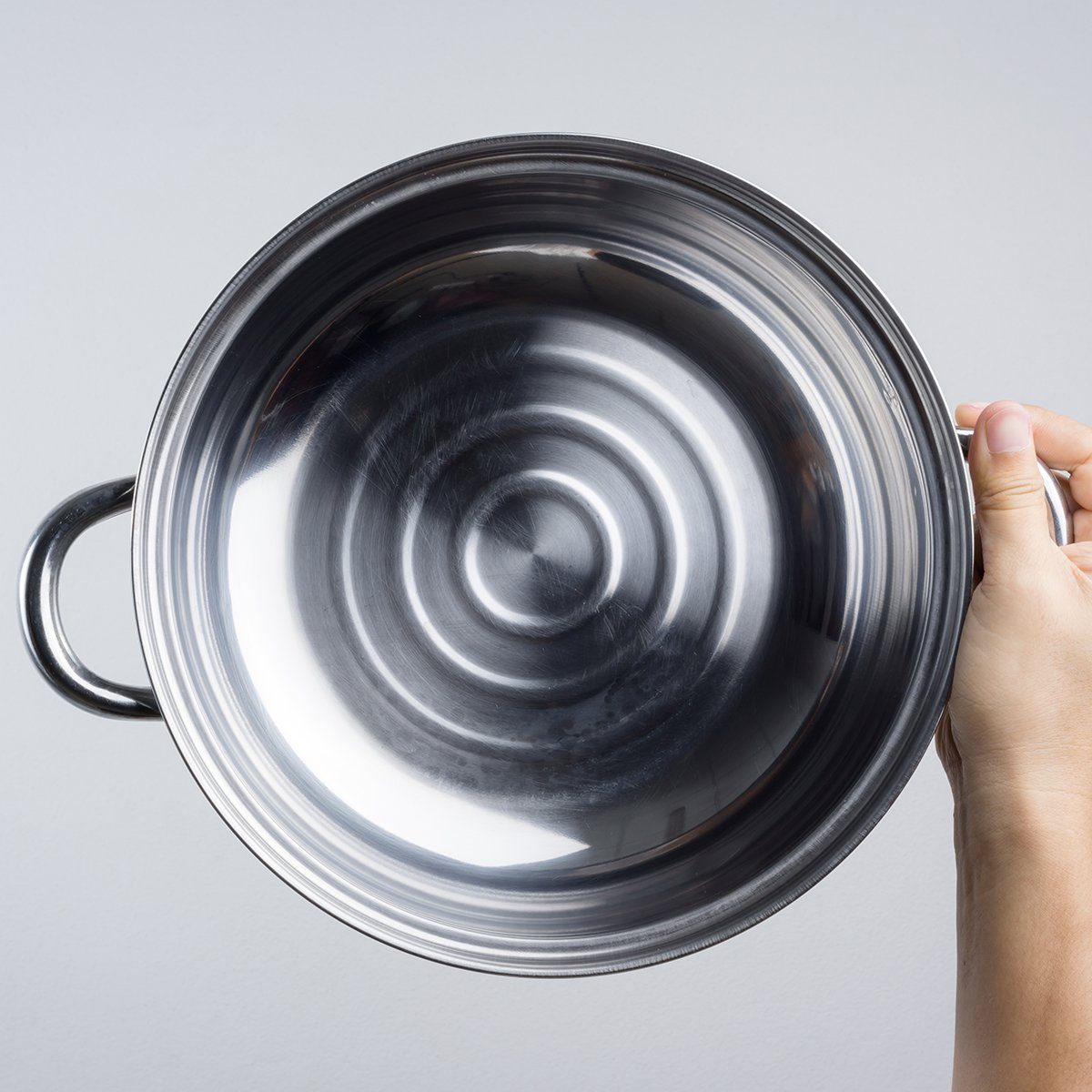
You’re not removing calcium build-up
Depending on how hard your water is, it could take a week or a few months to notice those chalky white spots on your stainless cookware. These calcium build-ups not only look unseemly, but they can also encourage bacteria growth. Remove them by boiling a solution of 3/4 cup water and 1/4 cup vinegar in the pan. Once the pan cools, wash and dry them like normal.
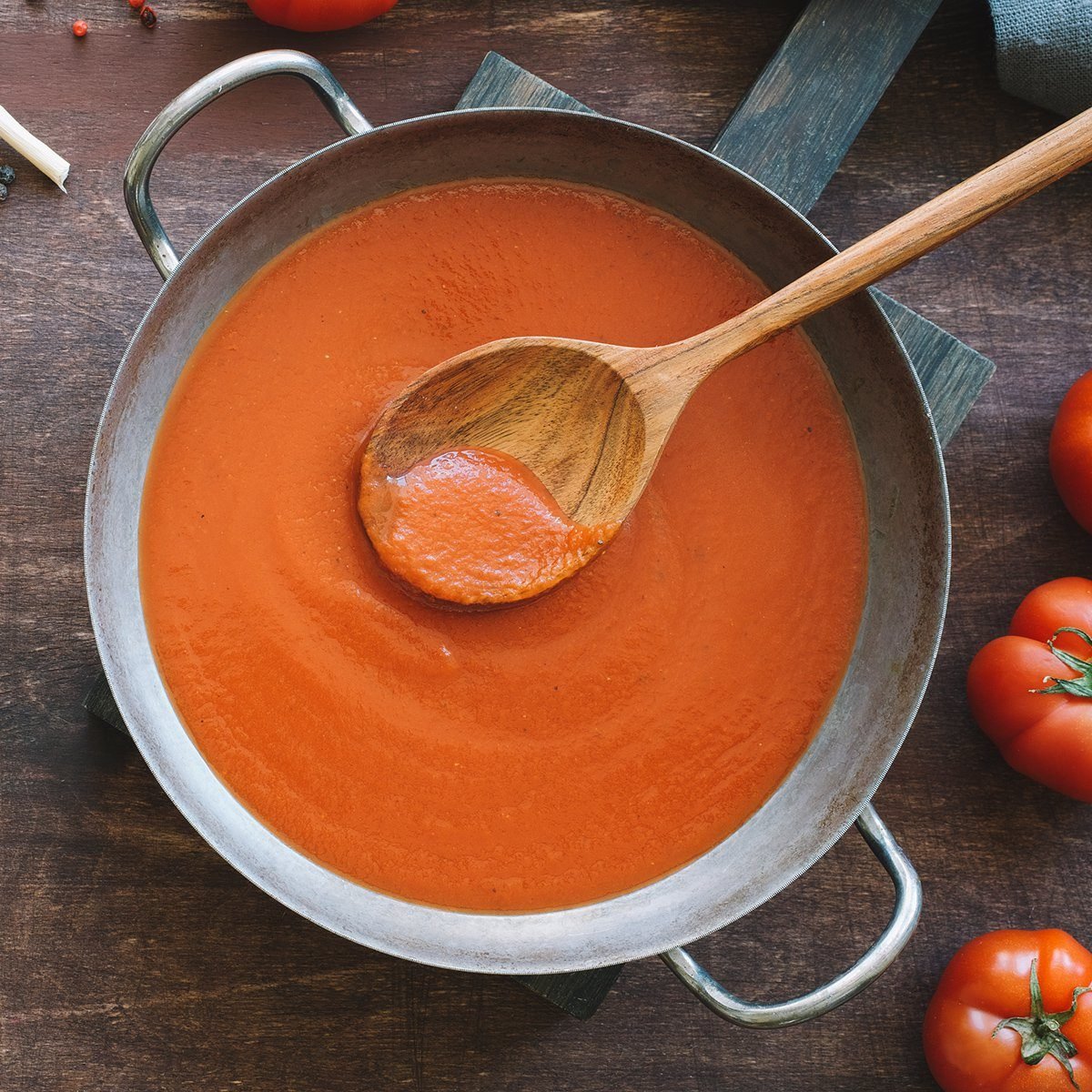
You’ve overheated it
If you’ve noticed stains that can’t be removed (even with vigorous scrubbing) around the edges of your pan, you have overheated the pan. Gently scrub at the stains with vinegar, or use the pan to cook something like tomato sauce. The acidity in the tomatoes will help with the discoloration.
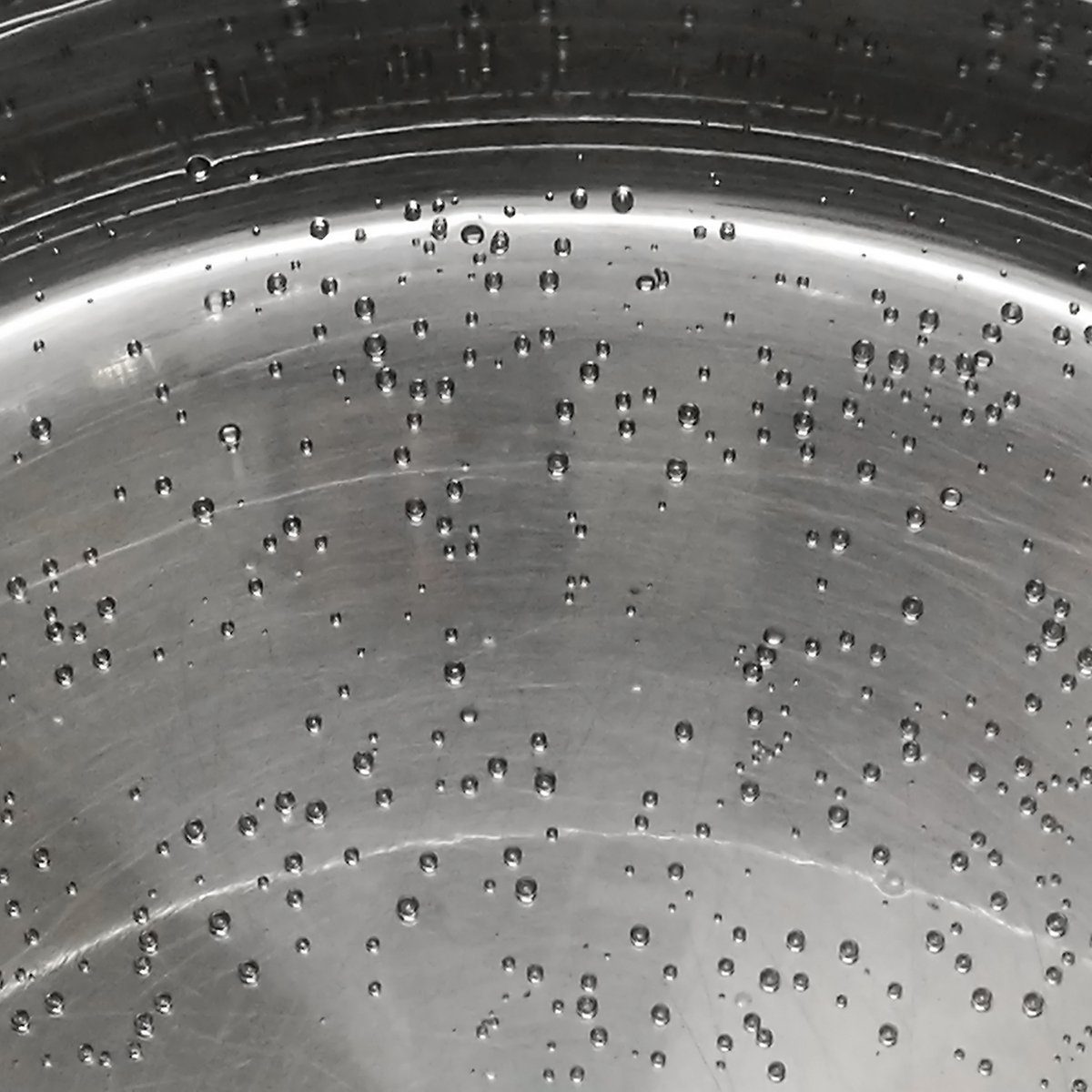
You’re not drying your pan
I have a confession to make: hand drying pots and pans is my least favorite kitchen task! Unfortunately, it’s the only way to remove those harmless water spots on stainless steel. It only takes a minute, but it makes a huge difference.
Don’t miss these clever household uses for kitchen tongs!
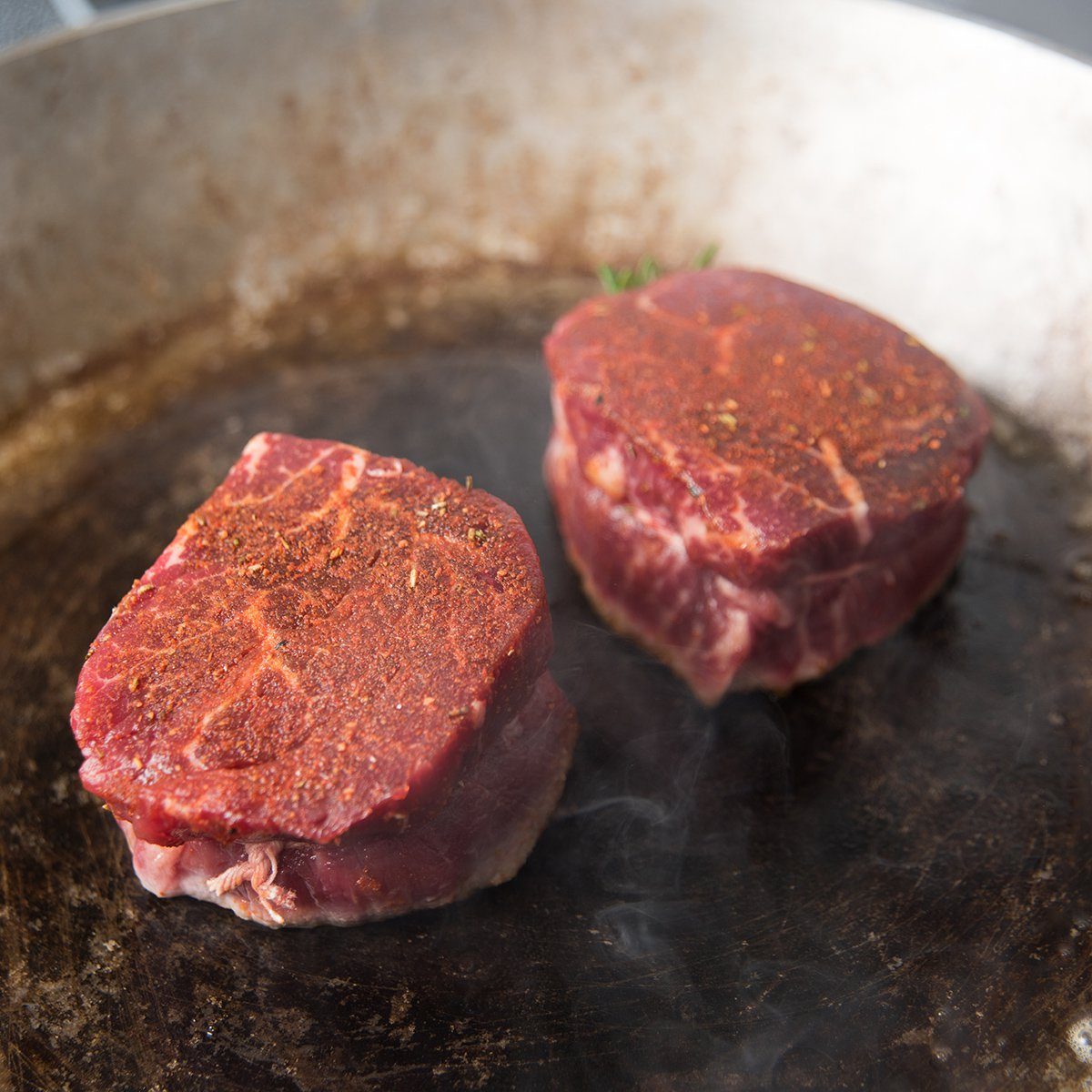
There are too many burnt bits on the pan
It’s hard to remove burnt bits on any pan, but stainless steel is particularly troublesome. Since food is more likely to stick to a cold pan, you can avoid the problem altogether by preheating your pans before cooking in them. If your pan is already burned, boil water in it to remove the burnt bits without the need for abrasive chemicals or scrubber brushes.
Here are more dirty kitchen items you never think to clean.
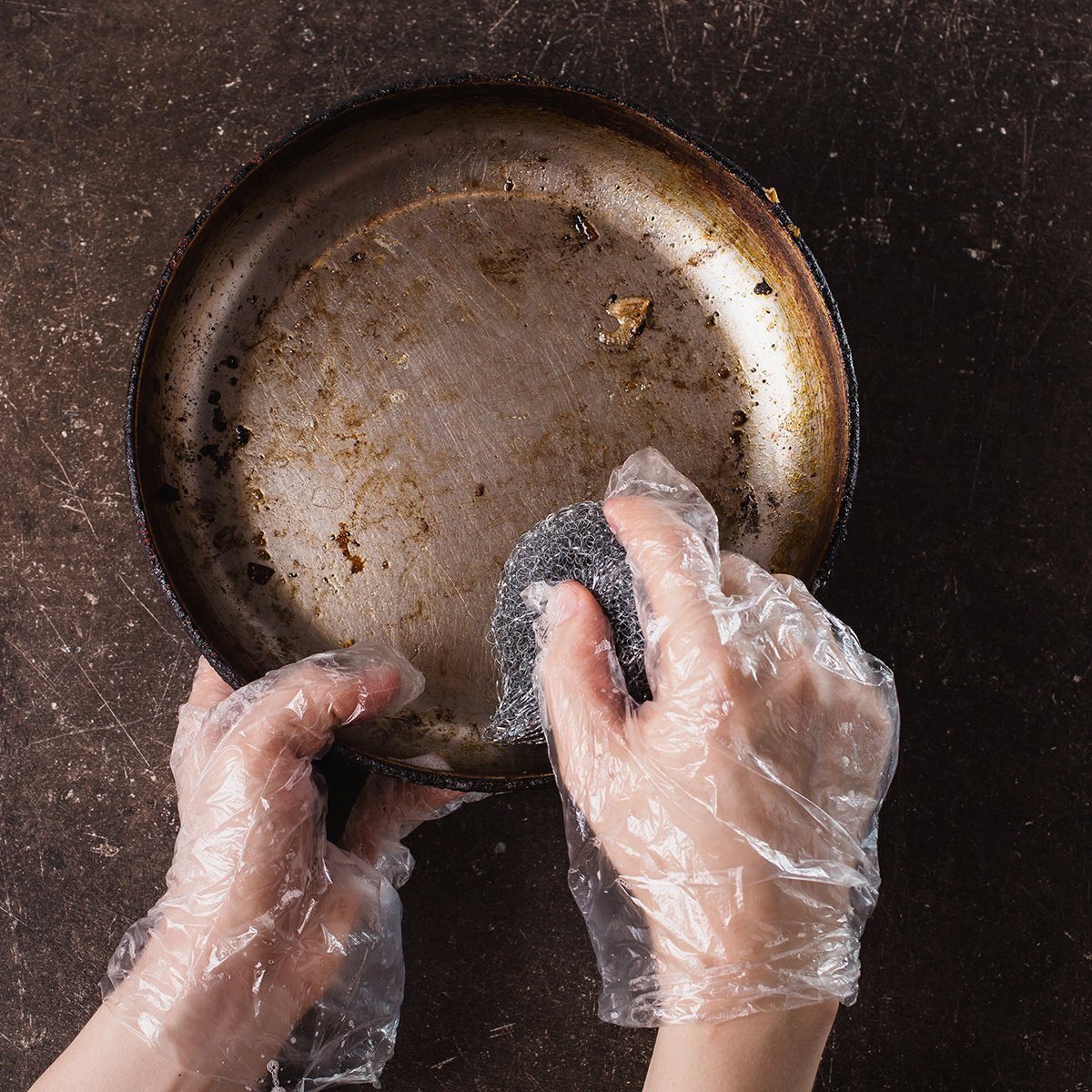
You’re using steel wool
Steel wool seems like a great way to remove stains and stubborn burnt bits, but it will also scratch the finish of your stainless steel pans. It may even void the warranty!
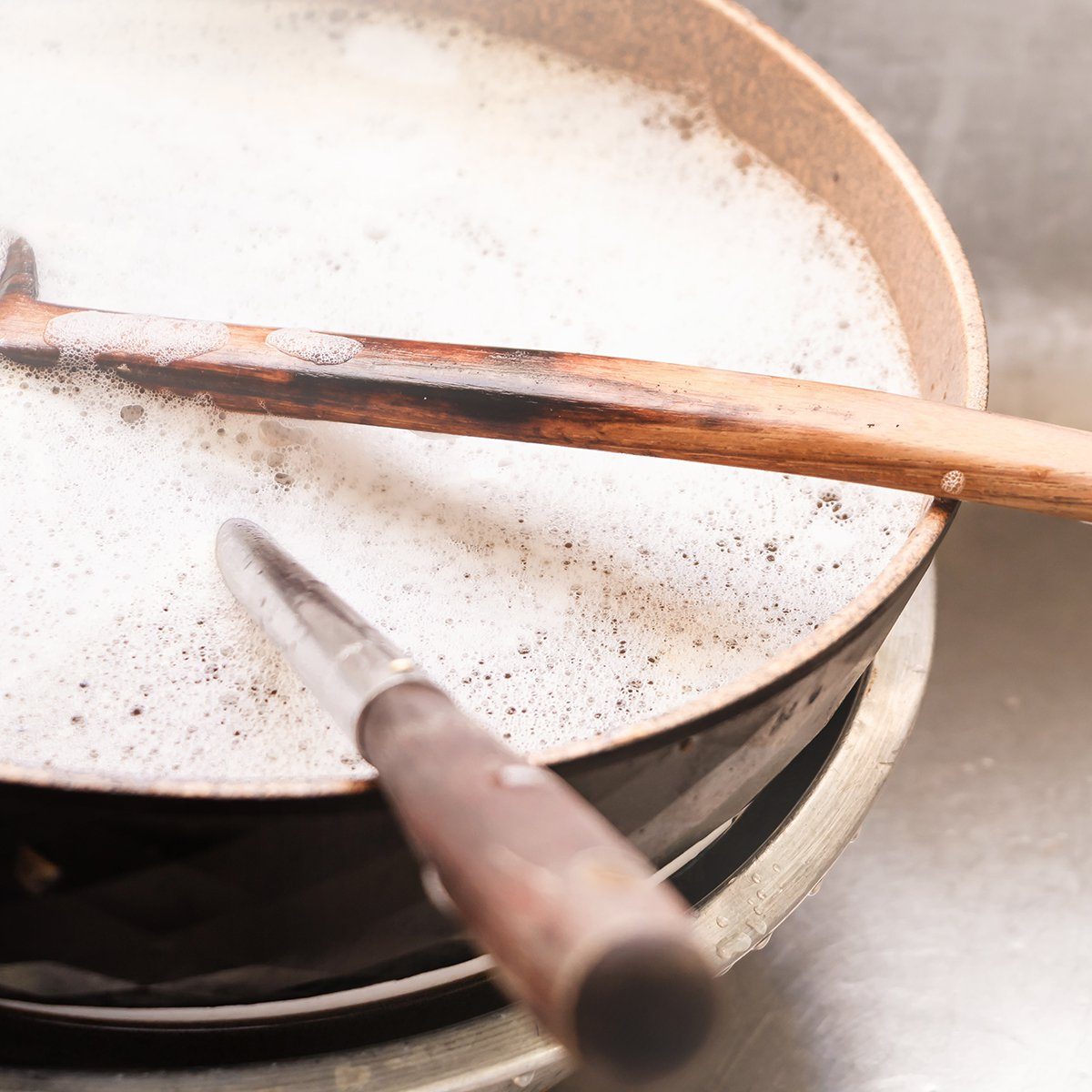
You’re using the wrong cleaner
If regular soap and water aren’t working, you might need to upgrade your cleaner. Many products work wonders at getting out all kinds of hard-to-clean stains, tarnish or mineral deposits on your cookware.
These 40 kitchen organizing ideas will save your sanity.